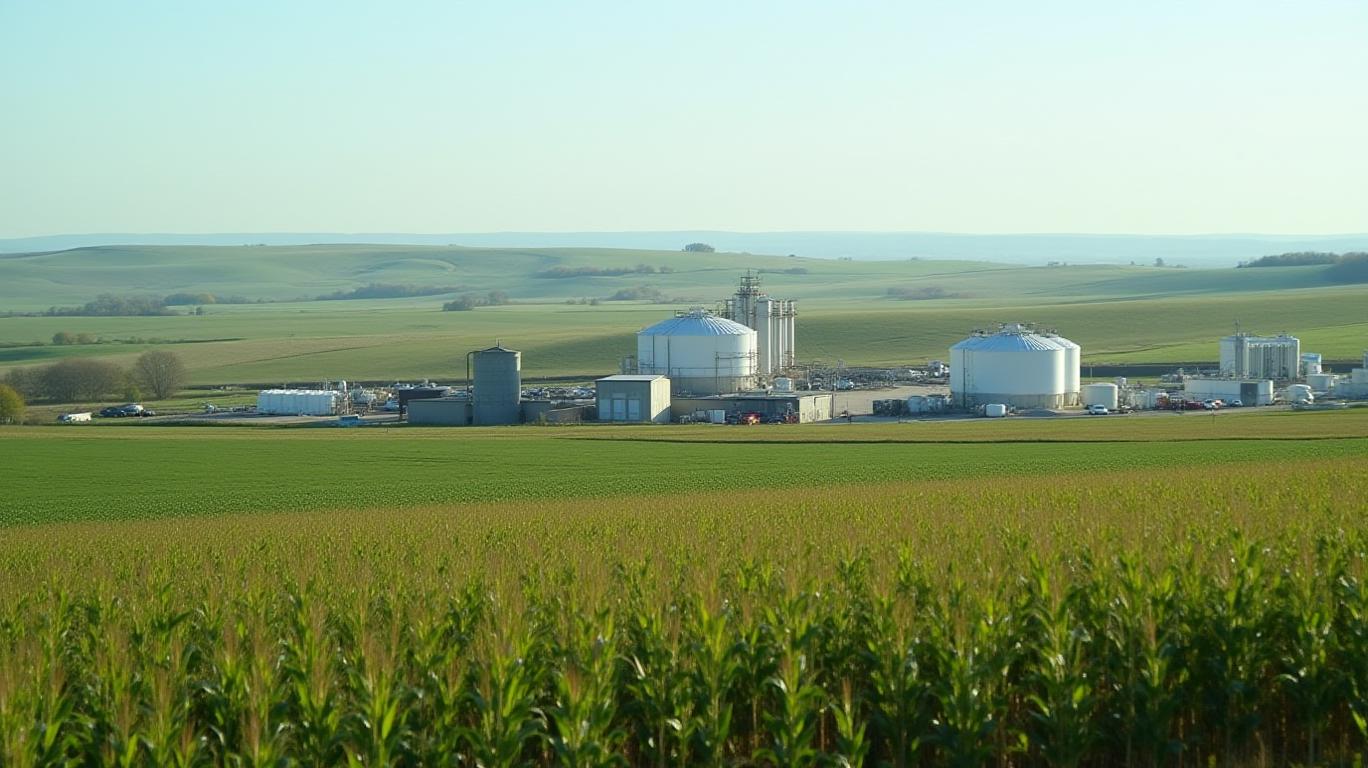The Andersons, Inc. Navigates Mixed Q1 Results Amid Sector-Specific Challenges
The Andersons, Inc. (NASDAQ: ANDP) delivered a mixed performance in Q1 2025, reflecting divergent trends across its core segments. While the Renewables Group and Agronomy divisions showcased resilience, the Agribusiness segment faced headwinds from global trade disruptions and weak commodity markets. This uneven quarter underscores the company’s dual exposure to cyclical agricultural markets and emerging opportunities in renewable energy.
Segment-Specific Dynamics
Renewables Group: The star performer, this segment achieved $15 million in pretax income, a 7% year-over-year increase, driven by higher ethanol yields and robust demand for renewable diesel (RD) feedstock. Its adjusted EBITDA rose to $37.5 million, marking a 11.6% improvement. This momentum aligns with the broader shift toward low-carbon fuels, as Renewable Volume Obligations (RVOs) in the U.S. continue to incentivize ethanol production.
Agribusiness: The segment reported a pretax loss of $5 million, a stark reversal from the $7 million profit in Q1 2024. Weakness stemmed from declining grain basis values, global trade uncertainties—including threatened tariffs and port fees—and an oversupply of alternative protein sources that depressed DDGS prices. These factors, combined with sluggish end-user demand, pressured margins.
Agronomy: A bright spot, this division benefited from strong early-season planting activity, with higher volumes and margins. Its success highlights the company’s ability to capitalize on precision agriculture and nutrient management services, which remain critical for farmers optimizing yields.

Financial Performance and Liquidity
Despite a $60 million decline in total revenue to $2.66 billion, gross profit surged 19.5% to $153 million, reflecting operational efficiencies. However, net income plummeted to $300,000, or $0.01 per diluted share, due to the Agribusiness segment’s struggles and elevated expenses.
The balance sheet remains robust. Cash flow from operations before working capital changes reached $57 million, a $9 million increase year-over-year, while liquidity stood at $219 million. Short-term debt rose to $828 million, but $223 million in readily marketable inventories (RMI) provided a safety net. The debt-to-EBITDA ratio of 1.8x—well below the 2.5x threshold—signals financial flexibility.
Strategic Priorities and Risks
Management emphasized two strategic thrusts:
1. Operational Efficiency: Capital expenditures jumped to $47 million in Q1 (up 74% year-over-year), with a focus on optimizing production facilities and integrating Agribusiness assets. Full-year capital spending is projected at $175–200 million, underscoring long-term growth ambitions.
2. Market Exposure: The Renewables Group is poised to benefit from rising RVOs and a potential rebound in U.S. corn production, which could alleviate feedstock constraints. Meanwhile, the Agribusiness segment faces lingering risks tied to trade policies and commodity price volatility.
Market Context and Shareholder Reaction
Despite beating adjusted EPS estimates ($0.12 vs. $0.02 forecasted), shares fell 8.73% post-earnings, reflecting investor skepticism about revenue declines and Agribusiness’ ongoing challenges. However, the company’s strong cash flow and balance sheet suggest it can weather near-term turbulence.
Conclusion: A Tale of Two Markets
The Andersons’ Q1 results reveal a company navigating contrasting forces. The Renewables and Agronomy segments, bolstered by structural tailwinds in clean energy and precision agriculture, offer clear growth paths. Meanwhile, Agribusiness faces cyclical headwinds that could ease if U.S. corn acreage expands and trade tensions abate.
Crucially, the firm’s $57 million operating cash flow and 1.8x debt-to-EBITDA ratio provide a sturdy foundation for investment in strategic initiatives. If Renewables can capitalize on rising ethanol demand and Agribusiness stabilizes with a robust corn harvest, the company could return to profitability in the latter half of 2025. Investors, however, must remain attuned to macro risks—such as geopolitical disruptions or a slowdown in global commodity demand—that could prolong the Agribusiness segment’s struggles.
In the balance,
retains the financial and operational toolkit to outlast current challenges while capitalizing on secular trends in renewables. For investors seeking exposure to agriculture and energy transition themes, this quarter’s mixed results may present a buying opportunity—if they are willing to endure near-term volatility.
Comments
No comments yet